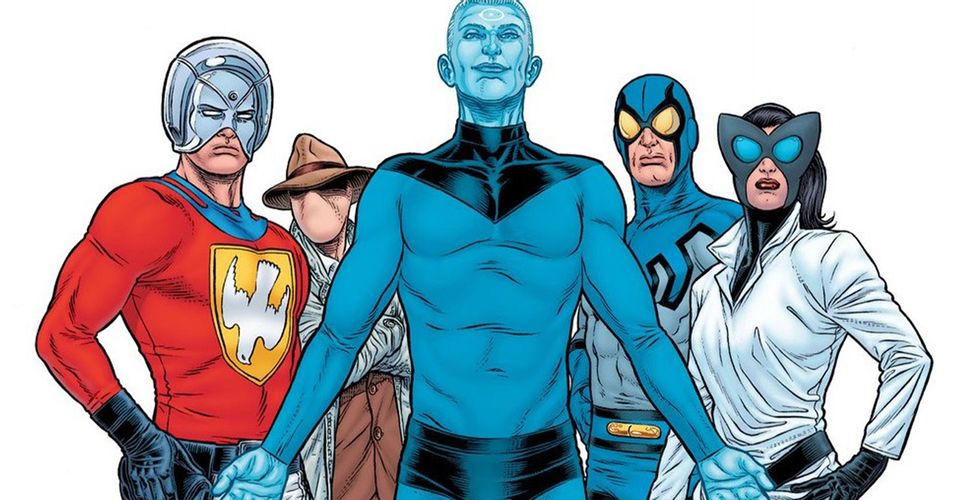How DC Made Alan Moore’s Original Watchmen Team A Reality

Alan Moore and Dave Gibbon’s Watchmen is one of the greatest comics of all time, with its far-reaching influence still being felt in the medium today. However, the comic masterpiece was originally supposed to feature Charlton characters under the DC Comics umbrella. Ultimately, new characters that were analogs were used instead. But, 2015’s Pax Americana by Grant Morrison and Frank Quitely imagined what the DC Comics story could look like in a contemporary setting. The answer? One of the most mind-bending single-issue comics ever.
When Alan Moore pitched Watchmen to DC Comics, he intended to use characters the publisher had acquired from Charlton Comics. The story was approved, but the characters were not, leading Moore and Gibbons to create a series of new superheroes for their 12-issue series. Initially, the Comedian was supposed to be Peacemaker, Rorshach was The Question, Dr. Manhattan was Captain Atom, Silk Spectre was Nightshade, Ozymandias was Peter Cannon, Thunderbolt, and Nite Owl was Blue Beetle. Things worked out for Moore and Gibbons as the creations would become iconic. But, later, Grant Morrison and Frank Quitely imagined what a modern telling of Watchmen would look like with the intended characters.
The Multiversity: Pax Americana #1 by Grant Morrison, Frank Quitely, and Nathan Fairbairn tells a complex, non-linear story across different decades. The crux of the story involves Vince Harley accidentally killing his father, the hero Yellowjacket, allowing him to see patterns that dictate his future. As a result, he decides to make superheroes protectors of the country, using Peacemaker to save President Bush from a terrorist attack at the White House. After meeting Captain Atom, Harley would become President and introduce his Pax Americana team. The superteam wows the world with Captain Atom creating three new towers in place of the fallen Twin Towers.

However, earlier in the stories, it’s revealed Peacemaker killed President Harley (flipping Ozymandias killing the Comedian) per his request, believing Captain Atom will resurrect him. However, rival political forces end up creating a black hole inside Captain Atom’s head, making him disappear from their reality. In response, The Question seeks answers on what happened to Captain Atom while severely distrusting the government and military. The comic ends with the revelation about Harley’s father, Yellowjacket, and how Captain Atom shows him his future.
The book is brilliant, confusing, and complex. Morrison and Quitely create a single-issue story where every panel and page matters and can be pretty much read in any order the reader pleases. The Watchmen references are also abundant, from a bloody first page, to the Charlton characters characterizations, the age of superheroes, a reoccurring symbol (the Mobius strip vs. the button), the non-linear storytelling, the use of an eight-panel grid (opposed to a nine-panel grid in Watchmen), reversing the Comedian vs. Ozymandias’ fate, multiple versions of Nightshade (Silk Spectre), and Captain Atom being multiple places across time at once. And there’s so many more than that.
The Multiversity: Pax Americana #1 proves to be a love letter and a modern interpretation of Watchmen that smartly and inoffensively weaves its own gorgeous tapestry. Morrison and Quitely created something that felt much like Moore and Gibbons’ creation using the characters originally intended for the story. What readers are left with is a masterfully told and illustrated story, that wears its Watchmen influence on its sleeve, but not in an obnoxious way. The comic is utterly brilliant and for those wanting a mind-bending Watchmen analog, it’s the perfect story.
About The Author

















